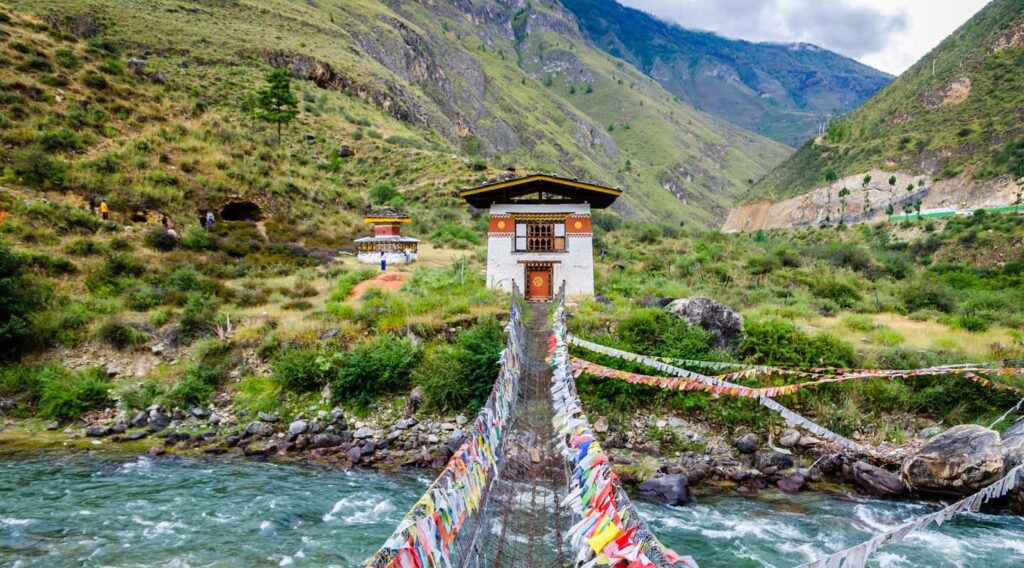Paro, Bhutan travel tips
Category
Categories
Popular Articles

Overview of the Destination
Paro is a mesmerizing valley town in the heart of Bhutan. Known for its lush rice fields, historical fortresses, and serene monasteries, it’s no wonder Paro is on every traveler’s bucket list. But it’s the iconic Tiger’s Nest Monastery, precariously perched on the cliff side that sets Paro apart. The postcard view of this sacred site alone makes the trip to this peaceful kingdom worthwhile.
Best Time to Visit
The best time to visit Paro is during Spring (March-May) and Fall (September-November) when the skies are clear, and festivals are in full swing. March hosts the vibrant Paro Tshechu, one of Bhutan’s largest monastic festivals. If you’re up for uncrowded trekking trails, consider visiting during the off-season (December-February). However, be prepared for chilly weather and closed mountain passes due to snow.
Climate & What to Pack
Bhutan experiences a diverse climate, ranging from subtropical in the south to temperate in Paro. Summers are warm with occasional rainfall, while winters are chilly, particularly at night. Pack layers like t-shirts, sweatshirts, and a warm jacket. Rain coverage, sturdy shoes for trekking, and modest clothing for visiting religious sites are also essential.
Getting There
Paro International Airport is the only international entry point into Bhutan by air. Departures are mainly from Kathmandu, Kolkata, Dhaka, Bangkok, and Singapore. Bhutan requires all tourists (except Indian, Bangladeshi, and Maldivian nationals) to obtain a visa before arrival, along with mandatorily booking their holiday through a Bhutanese licensed tour operator.
Getting Around Locally
Public transport is sparse in Paro. The most common way to get around is by hiring a taxi or riding shared minivans. Choose to rent a bike or just walk to enjoy the town’s tranquility at your own pace.
Safety Tips
Paro is exceedingly safe. However, when visiting the Tiger’s Nest Monastery, be cautious of the steep cliffs. Additionally, note that Bhutanese customs strongly encourage modest attire while visiting religious sites. Solo travelers, particularly women, should feel secure as Bhutanese society is respectful and crimes are very low.
Top Things to Do & See
Visiting the Tiger’s Nest Monastery is a must. Other attractions include Paro Dzong, a historical fortress, the National Museum, the isolated Kila Gompa nunnery, and exploring local markets. Try the hot stone bath for a unique Bhutanese spa experience.
Where to Stay
Paro hosts a range of accommodations catering to different budgets. Luxury seekers can choose resorts like Zhiwa Ling or Le Meridien. Hotel Olathang and Tashi Namgay Resort are great mid-range options, while budget travelers can consider Hotel Jigmeling or Khangkhu Resort.
Food & Local Cuisine
Bhutan’s cuisine is a spicy affair. Don’t miss out on trying Ema Datshi (chilies and cheese), Phaksha Paa (pork with red chilies), and Red Rice. Local eateries like Sonam Trophel Restaurant offer a delicious range of Bhutanese food. Remember, it’s customary to refuse food the first time it’s offered but accept on the second offer.
Cultural & Practical Tips
The local currency is the Ngultrum. English is widely spoken, and tipping is not common. Remember, Bhutan uses type D, F, or G plugs and a voltage of 230V. Wi-Fi is available in most hotels and some cafes but may not be reliable. It’s not unusual to see Bhutanese men in traditional ‘Gho’ and women in ‘Kira’ so don’t be surprised!
Sustainable or Responsible Travel Tips
Bhutan is the only carbon-negative country in the world, striving to maintain its pristine environment. Please respect its sanctity by not littering, being respectful of local customs, and not disturbing wildlife.
To conclude, Bhutanese people believe in ‘Gross National Happiness’ over ‘Gross National Product,’ and in Paro, this philosophy is palpably felt. So, let go of your usual touristy checklist, immerse yourself in the tranquility of Bhutan, and you’ll have an exquisitely unique experience.










